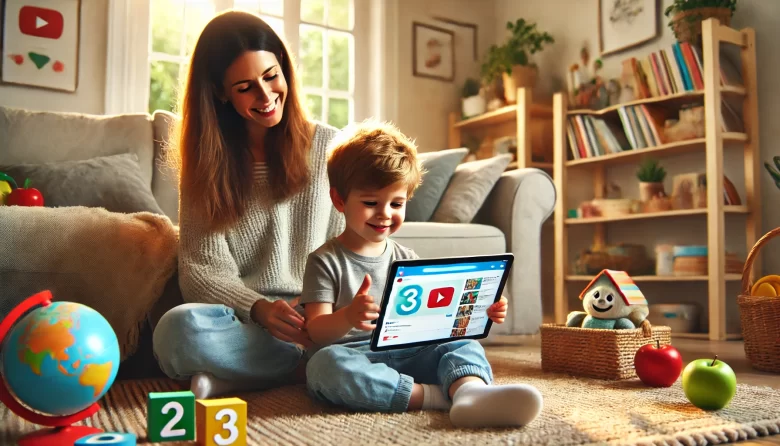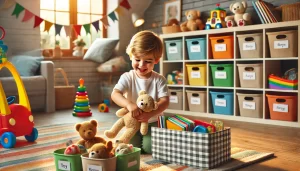With the rise of digital education, YouTube has become one of the best free learning resources for children. Whether it’s phonics and early literacy, math games, science experiments, or social-emotional learning, the right YouTube channels can make education fun and engaging.
But with so many options available, how can parents choose high-quality, educational content for their children?
In this comprehensive guide, we’ll cover:
✅ The benefits of using YouTube for early learning
✅ The best educational YouTube channels for different subjects
✅ How to ensure safe and appropriate viewing for kids
✅ Strategies to actively engage children while watching
✅ Tips for limiting screen time and balancing online learning
Let’s dive in! 🎥🎶📚
Why Use YouTube for Early Learning?
The Benefits of Learning Through YouTube
✅ Engages multiple senses – Videos combine visuals, sounds, and movement, making learning more immersive.
✅ Reinforces concepts through repetition – Many channels use songs and storytelling to help children remember key lessons.
✅ Introduces new topics in an exciting way – Science experiments, nature documentaries, and animated stories bring real-world learning into the home.
✅ Encourages independent exploration – Kids can choose topics they’re interested in and learn at their own pace.
However, not all YouTube content is beneficial. That’s why parents need to choose carefully and set up safety measures.
The Best Educational YouTube Channels for Kids
📖 Best YouTube Channels for Reading & Phonics
| Channel | What It Teaches |
|---|---|
| Alphablocks | Phonics, letter sounds, word-building |
| Sesame Street | Storytelling, early literacy, and social-emotional skills |
| Jack Hartmann Kids Music Channel | Phonics songs, sight words, and interactive movement |
| PBS Kids | Read-along stories and character-driven educational lessons |
🔢 Best YouTube Channels for Math & Numbers
| Channel | What It Teaches |
|---|---|
| Numberblocks | Counting, number recognition, and early math concepts |
| Khan Academy Kids | Basic math, problem-solving, and logical thinking |
| Math & Learning Videos 4 Kids | Simple explanations of math concepts for young learners |
| Scratch Garden | Fun animated math and counting lessons |
🔬 Best YouTube Channels for Science & Nature
| Channel | What It Teaches |
|---|---|
| SciShow Kids | Fun and engaging science experiments |
| National Geographic Kids | Wildlife, space, and earth science |
| Peekaboo Kidz | Biology, anatomy, and fun science facts |
| Cosmic Kids Yoga | Teaches mindfulness and movement through storytelling |
🎶 Best YouTube Channels for Music & Creativity
| Channel | What It Teaches |
|---|---|
| Super Simple Songs | Catchy songs that teach letters, numbers, and social skills |
| The Singing Walrus | Original educational music for preschoolers |
| Pinkfong! Kids’ Songs & Stories | Fun songs and rhymes (including “Baby Shark”) |
| Bounce Patrol | Engaging sing-along songs for early learners |
🌍 Best YouTube Channels for Social & Emotional Learning
| Channel | What It Teaches |
|---|---|
| Daniel Tiger’s Neighborhood | Teaches emotions, empathy, and friendships |
| Cocomelon – Nursery Rhymes | Social lessons through songs and storytelling |
| GoNoodle | Movement and mindfulness activities |
| Miss Linky | Fun dance and fitness videos for kids |
By selecting age-appropriate, educational channels, parents can turn screen time into a valuable learning experience.
How to Keep YouTube Safe for Young Children
📌 Set Up YouTube Kids
YouTube Kids is a safer, child-friendly version of YouTube that:
✅ Filters out inappropriate content
✅ Allows parents to set time limits
✅ Lets parents approve specific channels
🔹 How to Enable YouTube Kids:
- Download the YouTube Kids app (available for iOS & Android).
- Set up a child profile with age-based content filters.
- Turn on “Approved Content Only” mode to manually select channels.
📌 Use Parental Controls on Regular YouTube
If using regular YouTube, parents can:
✅ Enable Restricted Mode – Blocks content flagged as inappropriate.
✅ Create a supervised account – Allows parents to monitor their child’s activity.
✅ Disable autoplay – Prevents children from being recommended unrelated content.
🔹 Pro Tip: Watch videos with your child to ensure they engage with educational, high-quality content.
How to Actively Engage Kids While Watching YouTube
🎤 Encourage Singing & Movement – If watching an alphabet song, sing along together!
🗣 Ask Questions – Pause the video and ask, “What do you think happens next?”
🎨 Turn Videos into Hands-On Learning – After watching a science experiment, try it at home!
📚 Connect Videos to Books – Read a book related to the video topic.
Active engagement turns video time into a meaningful learning experience.
How to Limit Screen Time & Balance Online Learning
🎯 Screen Time Guidelines (AAP Recommendations):
✅ Ages 2-5: Max 1 hour/day of high-quality screen time.
✅ Ages 6+: Screen time should be balanced with physical activity and offline learning.
📌 Tips to Reduce Excessive Screen Time
✔ Use a Timer – Set a limit before starting a video session.
✔ Create “No-Screen Zones” – Keep mealtimes and bedrooms screen-free.
✔ Encourage Offline Activities – Balance YouTube time with reading, outdoor play, and hands-on activities.
✔ Be a Role Model – Reduce your own screen time when spending time with your child.
The Future of Educational YouTube Content
🚀 AI-Powered Learning Videos – Videos that adjust difficulty levels based on a child’s progress.
🎭 Interactive Video Lessons – Content where children can choose the outcome of a story.
🌍 More Multilingual & Cultural Content – Expanding access to language-learning videos and global perspectives.
As technology evolves, YouTube will continue to be a powerful educational tool—as long as it’s used mindfully and in moderation.
Final Thoughts:
✔ YouTube can be a valuable educational resource—when used wisely.
✔ Choose high-quality channels that promote literacy, math, science, and creativity.
✔ Use parental controls and safety features to protect your child online.
✔ Engage actively—watch videos together and connect them to real-world learning.
✔ Balance screen time with offline activities for a well-rounded learning experience.
By following these strategies, parents can turn YouTube into a powerful learning tool while ensuring safe, engaging, and educational screen time.




